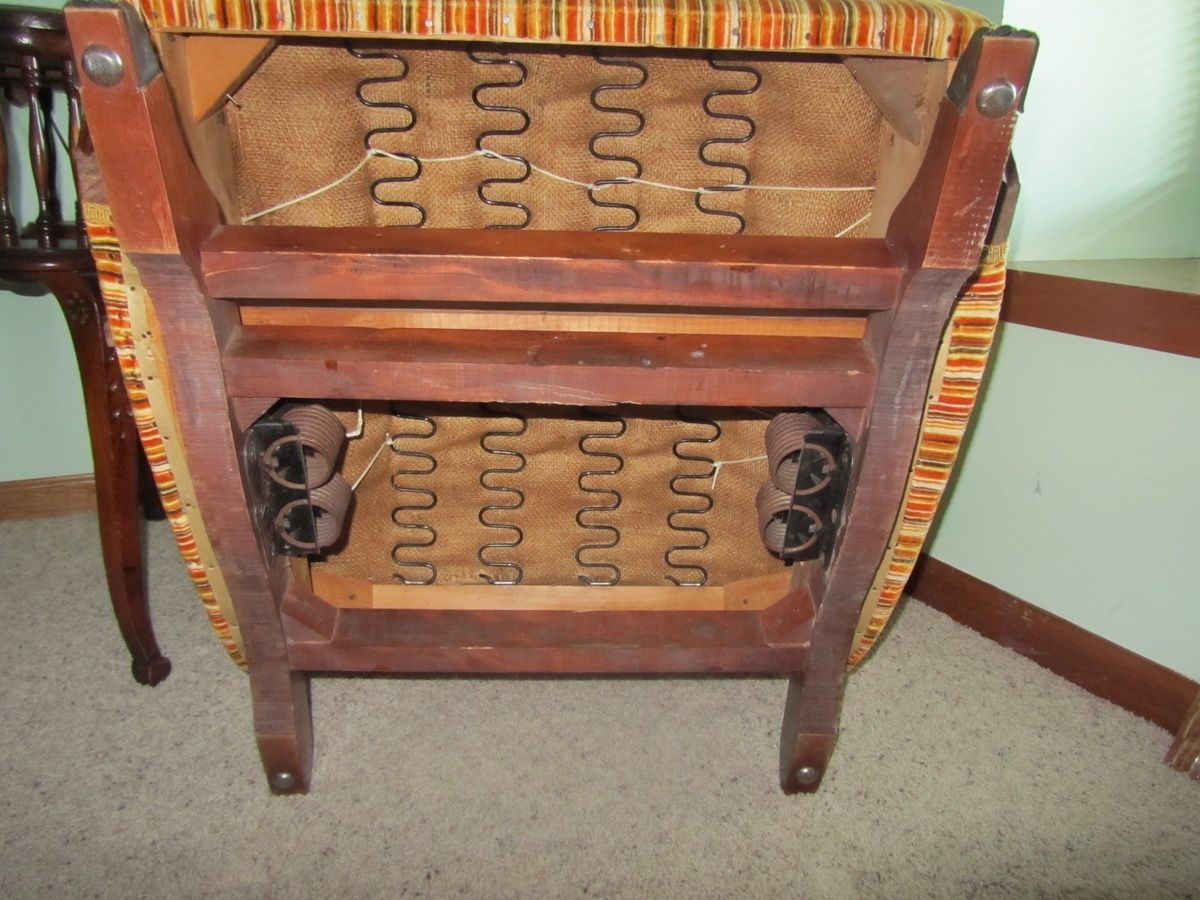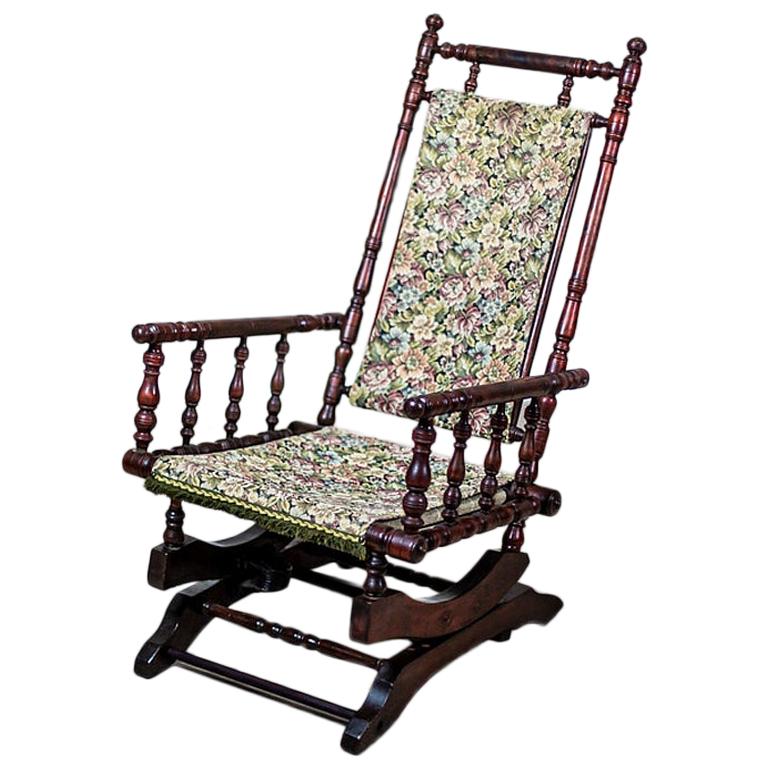Understanding Antique Rocking Chair Springs

Antique rocking chairs are not only beautiful pieces of furniture, but they also represent a fascinating evolution in design and craftsmanship. One of the key elements that contribute to their unique character and functionality is the spring system. Antique rocking chair springs have undergone significant changes throughout history, reflecting the ingenuity and evolving materials available to artisans.
Types of Springs Used in Antique Rocking Chair Springs
The types of springs used in antique rocking chairs varied depending on the era and the desired level of comfort and durability.
- Leaf Springs: These springs were commonly used in the early days of rocking chair production. They consisted of multiple layers of thin, flexible metal strips that were layered and secured together. Leaf springs provided a sturdy and reliable rocking motion, but they could be somewhat stiff and less comfortable than other spring types.
- Coil Springs: As technology advanced, coil springs became more popular. These springs are made of coiled metal wire that provides a smoother and more comfortable rocking experience. Coil springs were often used in conjunction with other spring types to enhance comfort and support.
- Cantilever Springs: Cantilever springs are a more modern type of spring that uses a single, long, curved spring to provide support. They offer a smooth and responsive rocking motion and are often found in high-end rocking chairs.
Materials Used for Antique Rocking Chair Springs
The materials used for antique rocking chair springs have also evolved over time.
- Steel: Steel was the most commonly used material for springs, due to its strength and durability. Early springs were often made of wrought iron, which is a type of steel that is malleable and can be easily shaped.
- Brass: Brass was sometimes used for springs, especially in the Victorian era. Brass is known for its resistance to corrosion, making it suitable for outdoor furniture.
- Bronze: Bronze was also used for springs in some antique rocking chairs. Bronze is a strong and durable metal that can withstand wear and tear.
Historical Overview of Rocking Chair Spring Designs
The evolution of rocking chair spring designs reflects the changing needs and preferences of consumers.
- Early Rocking Chairs (1700s-1800s): Early rocking chairs often relied on simple leaf spring systems. These springs provided a basic rocking motion, but they could be quite stiff and uncomfortable.
- Victorian Era (1837-1901): During the Victorian era, rocking chairs became more elaborate and ornate. Coil springs became more popular, providing a smoother and more comfortable rocking experience.
- Early 20th Century: The early 20th century saw the introduction of cantilever springs, which offered a more responsive and comfortable rocking motion. These springs were often used in conjunction with coil springs to enhance support and durability.
Examples of Antique Rocking Chair Spring Styles and Their Unique Characteristics
Antique rocking chairs often feature unique spring styles that contribute to their overall character and functionality.
- “S” Springs: “S” springs are a type of leaf spring that is shaped like the letter “S.” They are often found in antique rocking chairs from the 18th and 19th centuries. “S” springs provide a strong and durable rocking motion, but they can be somewhat stiff.
- “C” Springs: “C” springs are another type of leaf spring that is shaped like the letter “C.” They are often found in antique rocking chairs from the 19th century. “C” springs are more flexible than “S” springs, providing a smoother and more comfortable rocking motion.
- “Cantilever Springs”: Cantilever springs are a more modern type of spring that uses a single, long, curved spring to provide support. They offer a smooth and responsive rocking motion and are often found in high-end rocking chairs.
Identifying and Assessing Antique Rocking Chair Springs

Antique rocking chair springs, often crafted from steel, are fascinating relics of bygone eras. Their intricate design and durability offer a glimpse into the craftsmanship of the past. However, understanding their condition and assessing their structural integrity is crucial for preserving these valuable pieces and ensuring safe use.
Identifying Signs of Wear and Tear
Wear and tear are inevitable in antique rocking chair springs, but understanding the common signs can help in assessing their condition.
- Rust: Rust is a common sign of age and exposure to moisture. It can weaken the springs and affect their functionality.
- Cracks and Breaks: These are serious signs of wear and tear. Cracks can indicate metal fatigue, while breaks might render the springs unusable.
- Bent or Misaligned Springs: Springs that are bent or misaligned can cause uneven rocking and potential instability. This often occurs due to excessive weight or impact.
- Loose or Worn Connections: The connections between the springs and the rocking chair frame can loosen or wear over time, leading to instability and potential detachment.
Determining Age and Origin
While the exact age and origin of antique rocking chair springs can be challenging to pinpoint, several clues can help narrow it down.
- Material: The type of steel used in the springs can provide insights into their age. For example, early springs might be made of wrought iron, while later ones could be made of different types of steel.
- Design: The shape and design of the springs can also offer clues. Certain designs might be associated with specific periods or regions.
- Markings: Some springs might have markings or stamps that indicate their manufacturer or date of production.
- Historical Context: Researching the history of the rocking chair itself can provide clues about the age and origin of the springs. For example, a rocking chair from a specific period might have been equipped with springs from that era.
Assessing Structural Integrity and Safety
Assessing the structural integrity and safety of antique rocking chair springs is crucial before using the chair.
- Visual Inspection: A thorough visual inspection for signs of rust, cracks, breaks, and misalignment is essential.
- Testing: Gently rocking the chair back and forth can reveal any signs of instability or loose connections.
- Professional Evaluation: For antique rocking chairs that are particularly valuable or show signs of significant wear and tear, a professional evaluation by a furniture restorer or antique expert is recommended. They can assess the structural integrity and recommend appropriate restoration or repair measures.
Cleaning and Preserving Antique Rocking Chair Springs
Proper cleaning and preservation can help extend the lifespan of antique rocking chair springs.
- Dust Removal: Regular dust removal with a soft cloth or brush can prevent the accumulation of dirt and debris.
- Rust Removal: If rust is present, a mild rust remover can be used. However, care should be taken not to damage the metal surface.
- Lubrication: Applying a light layer of oil or lubricant to the springs can help reduce friction and prevent wear and tear.
- Storage: When not in use, antique rocking chairs should be stored in a dry and cool environment to prevent rust and moisture damage.
Restoring and Replacing Antique Rocking Chair Springs

Antique rocking chair springs, like any other mechanical component, can succumb to the wear and tear of time. Restoring or replacing these springs is crucial for maintaining the chair’s functionality, stability, and aesthetic appeal. This process requires a careful balance of preservation and restoration, ensuring the chair’s historical integrity while restoring its rocking motion.
Restoring Antique Rocking Chair Springs
Restoring antique rocking chair springs involves addressing damage and restoring their original functionality. This process can be delicate and requires a skilled hand to avoid compromising the spring’s integrity.
- Cleaning and Inspection: Begin by thoroughly cleaning the springs with a wire brush or a damp cloth to remove dirt, rust, and debris. Carefully inspect the springs for signs of damage, such as cracks, breaks, or worn-out sections. This step is crucial to identify the extent of the restoration needed.
- Repairing Damaged Springs: For minor cracks or breaks, consider using a metal epoxy or welding to mend the damaged areas. However, it’s essential to use a filler that matches the spring’s material and to avoid excessive heat during welding, as this could compromise the spring’s temper. For worn-out sections, you might be able to add small pieces of metal to rebuild the spring’s shape.
- Re-tempering: After any repairs, it’s crucial to re-temper the springs to restore their original strength and elasticity. This process involves heating the springs to a specific temperature and then quickly cooling them down, which can be done by a professional metalworker.
Replacing Antique Rocking Chair Springs
If the springs are beyond repair, replacing them is the best option. Sourcing replacement springs for antique rocking chairs can be challenging, as finding exact replacements is often difficult.
- Matching Existing Springs: The first step is to measure the existing springs to determine their length, width, thickness, and the number of coils. This information will help you find springs with similar dimensions.
- Sourcing Replacement Springs: Antique chair specialists, restoration shops, or online retailers specializing in antique furniture parts are potential sources for replacement springs. You can also consult with a blacksmith or metalworker who can custom-make springs based on your specifications.
- Material Considerations: When choosing replacement springs, consider the original material of the springs. Antique rocking chairs often used high-quality steel springs. If possible, opt for similar materials to maintain the chair’s authenticity and ensure the springs have the desired strength and durability.
Installing New or Restored Springs
Installing new or restored springs requires careful alignment and tensioning to ensure the rocking chair functions smoothly and safely.
- Preparation: Before installation, make sure the chair’s frame is stable and secure. Remove any existing springs or spring brackets. If necessary, clean the mounting points to ensure a smooth installation.
- Spring Alignment: Carefully align the new or restored springs with the mounting points on the chair’s frame. Ensure that the springs are positioned correctly and that the coils are not overlapping or twisted.
- Tensioning: Once the springs are in place, adjust their tension by carefully bending or adjusting the spring brackets. The tension should be sufficient to provide a smooth and comfortable rocking motion without excessive bouncing or sagging.
- Testing: After installation, test the rocking chair thoroughly to ensure the springs are properly tensioned and the chair rocks smoothly and safely. If necessary, make further adjustments to achieve the desired rocking motion.
The antique rocking chair springs, often crafted from resilient steel, whisper tales of generations past. Their rhythmic creak evokes a sense of calm, a tranquility that might be found in a remote setting like rocking chair ranch deer hunting.
These springs, like the echoes of a bygone era, remind us that the essence of comfort and quietude endures, whether in a rustic cabin or a grand manor.
Antique rocking chair springs, often crafted from resilient steel, whisper tales of bygone eras. Their gentle creak, a symphony of time, evokes images of families gathered, stories shared, and moments cherished. While the allure of vintage charm remains strong, a contemporary twist can be found in the white rocking chair Lowe’s offers.
This modern interpretation, though lacking the aged patina of its predecessors, captures the essence of comfort and relaxation, reminding us that the rocking chair, in all its forms, embodies a timeless tradition of respite and reflection.